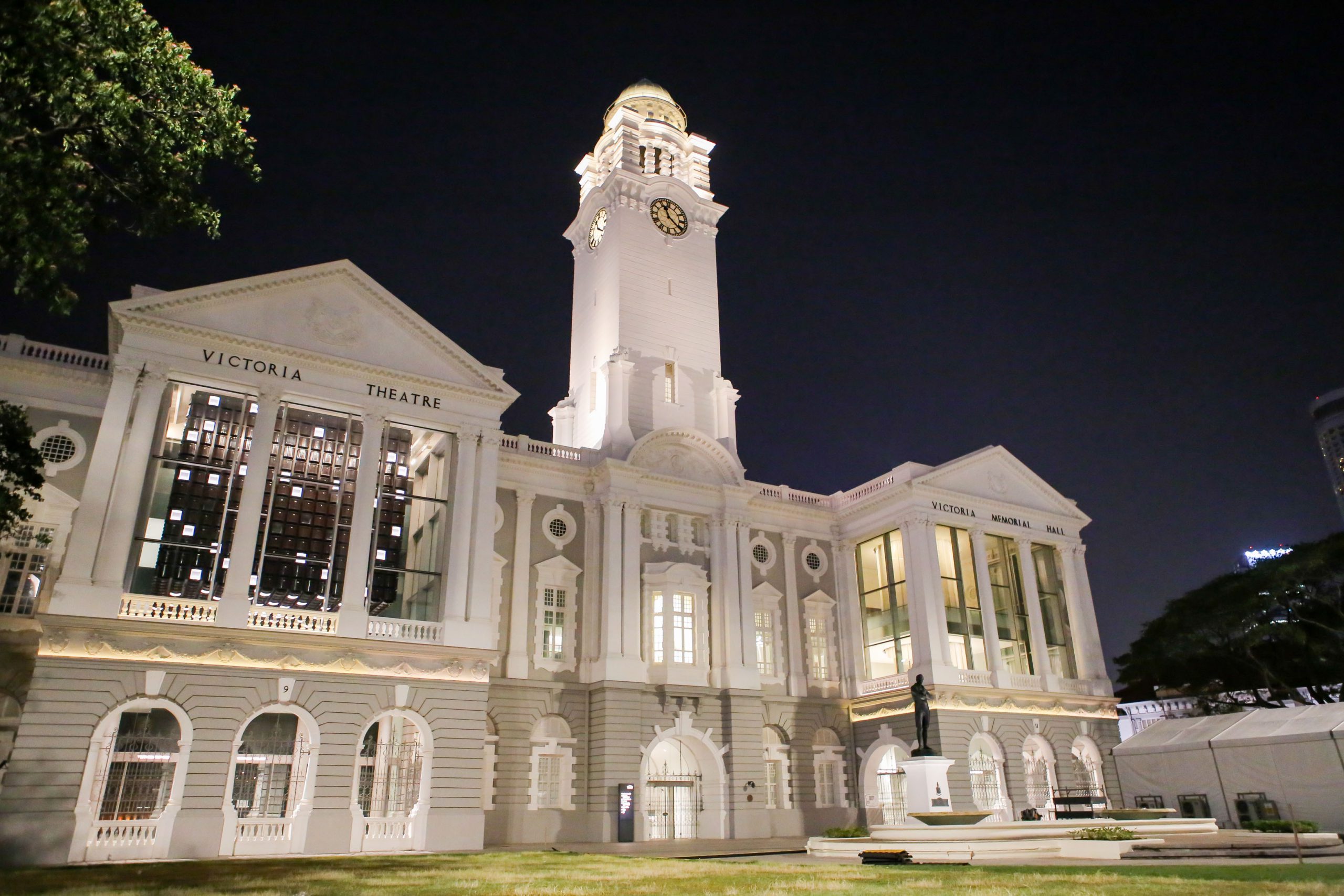Multilingual Dramaturgy and Staging Relevant Translations in Singapore
August 9, 2023

The National Theatre was opened on 8 August 1963 to commemorate postcolonial Singapore’s self-governance. As the venue for the opening ceremony of the first Southeast Asia Cultural Festival which starred artists from 11 Asian countries, the National Theatre was known for the multicultural and invariably multilingual performances staged there. Even after its demolition from June to August 1986, bilingual or multilingual translations of theatre performances have continued to be prominent in the local theatre scene.
In ‘Multilingual Dramaturgy and Staging Relevant Translations in Singapore’ (in Dramaturgy of Migration: Staging Multilingual Encounters in Contemporary Theatre (Routledge, 2019)), Assistant Professor Alvin Eng Hui Lim (NUS English, Linguistics and Theatre Studies) illustrates how local theatres share a linguistic landscape that has been shaped by Singapore’s Chinese, Malay, Indian, and Other (CMIO) approach to racial, linguistic and cultural policies. He also illuminates how different elements of a theatre production come together to manifest an ongoing process of “translation”, which creates shifting meanings.
Lim asserts that staged multilingual plays enact a process of relevant translation, especially when they perform dialects and minority languages. The relevance of translations emerges through surtitles (translated or transcribed dialogue projected above a stage or displayed on a screen) and actors’ bodies and performances, because these theatrical elements arguably reflect and comment on existing asymmetries of language and representational politics in Singapore.
Moreover, contradictions between the embodiment and exhibition of texts (including surtitles), bodies, voices and speeches help stage the struggle to embody language, Lim argues. This may occur through physical dissonance, when the ethnicity suggested by an actor’s skin colour sometimes distracts the spectator when they assume that one language is associated with a certain skin. A mix of audience reception can also occur when the same language as text and voice sound different to different audience members, based on their linguistic and cultural backgrounds, or when the surtitles do not quite match the meaning of the spoken language. These juxtapositions thus exemplify the inherent impossibility of actors embodying fully and authentically a supposed pure language.
Lim contends that such translative migration of meaning – from the source language to the present context of language learning, writing and use in Singapore that would be relevant to audience members – elucidates and challenges how CMIO language markers are often mapped onto local theatres. These multilingual plays thus highlight the problematic definitions of identity and language (in the context of theatre) because language coheres with and contradicts (racialised) identity at different moments of the performance. They allow for multiple interpretations of meaning, especially when sections of an audience cannot understand the other language and can only acknowledge its existence and form their own impressions of its ‘meaning’ when it is spoken onstage.
Lim concludes that to stage multilingual plays is to embody all the difficulties and limitations of cultural representation. Theatres must also be cognisant of the diversity of audiences, who may be of different language competencies and who therefore do not automatically speak and understand all languages interchangeably. A/P Lim asserts that ultimately, the act of translation in theatre questions language at the most personal and emotional level of self, because language lies at the heart of our identities in Singapore’s multilingual society.
Read the chapter here.
